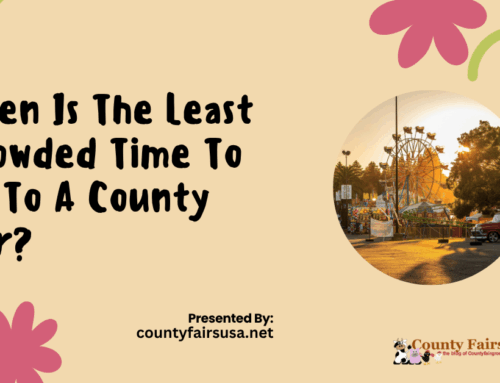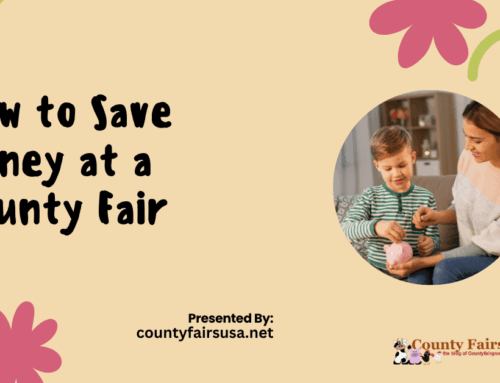Every year, communities across the country gather for an event that feels like a step back in time, where homemade pies are still judged with pride, folk music fills the air, and children marvel at farm animals up close. These gatherings are more than just celebrations; they are deeply rooted in tradition, serving as a bridge between generations and a testament to local heritage.
How County Fairs Preserve Local Culture
Despite the fast pace of modern life, these events continue to thrive, offering a rare chance to experience the customs, crafts, and flavors that define a region. They provide an opportunity to see firsthand how farming traditions are upheld, how artisans keep time-honored skills alive, and how local music and storytelling shape cultural identity. As cities expand and digital interactions dominate, these gatherings stand strong, reminding us of the importance of community, craftsmanship, and cultural preservation.
Understanding their role in keeping traditions alive helps us appreciate why these events are not just entertaining but essential. Let’s explore how they continue to safeguard local culture and ensure that heritage is passed down for future generations.
1. The Historical Significance of County Fairs
County fairs date back to the early 19th century, originally organized as agricultural exhibitions. These gatherings provided farmers a platform to share their best livestock, crops, and farming techniques. Over time, they evolved to include competitions, entertainment, and educational activities.
How County Fairs Have Evolved Over Time
- Early fairs focused on livestock exhibitions and crop contests.
- By the late 1800s, fairs incorporated carnival attractions, local vendors, and artistic showcases.
- Modern fairs blend traditional elements with newer forms of entertainment, ensuring they remain relevant while honoring their roots.
Despite changes, county fairs have never lost sight of their primary purpose—celebrating and preserving the unique character of local communities.
2. Keeping Agricultural Traditions Alive
Agriculture has always been at the heart of county fairs. These events give farmers and ranchers a space to exhibit their work, fostering appreciation for the labor and dedication involved in food production.
How County Fairs Support Agriculture:
- Livestock competitions highlight the skill and care required in breeding cattle, sheep, and poultry.
- Farm equipment showcases educate the public on both traditional and modern farming methods.
- 4-H and FFA programs encourage young people to learn farming skills and develop a connection to the land.
These exhibitions not only help sustain agricultural knowledge but also ensure that younger generations remain engaged in the field.
3. Celebrating Local Arts, Crafts, and Handicrafts
Beyond farming, county fairs serve as an important venue for artisans to display their work. Handmade goods, whether pottery, woodworking, or embroidery, tell stories of cultural heritage and skilled craftsmanship.
Traditional crafts often featured at county fairs include:
- Quilting and textile arts
- Woodcarving and metalwork
- Handwoven baskets and pottery
- Folk art and calligraphy
Many of these skills have been passed down for generations, and the fair provides artisans with a rare opportunity to share their work with a larger audience. The presence of live demonstrations also allows fairgoers to witness these crafts in action, fostering appreciation for techniques that might otherwise fade away.
4. The Culinary Heritage of County Fairs
Food is a universal way to preserve culture, and county fairs are no exception. Many of the dishes featured at these events have deep historical roots and reflect the agricultural heritage of the region.
What Makes County Fair Food Special?
- Regional specialties: Some fairs highlight foods unique to the area, such as deep-fried delicacies in the South or farm-fresh apple pies in the Northeast.
- Family recipes: Many vendors continue to prepare dishes using traditional family recipes, ensuring authenticity in flavors.
- Cooking competitions: Contests for the best jams, pies, and barbecue dishes celebrate culinary traditions and encourage the preservation of classic recipes.
For many attendees, tasting these dishes is more than just a meal—it’s an experience that connects them to the flavors and stories of their ancestors.
5. Folk Music, Dance, and Live Entertainment
Music and dance play a significant role in preserving regional identity, and county fairs provide the perfect stage for these traditions to thrive. From bluegrass performances to square dancing and mariachi bands, live entertainment at county fairs reflects the cultural diversity of different communities.
Cultural Performances That Keep Traditions Alive
- Folk storytelling: Oral traditions passed through generations keep history alive.
- Regional dance performances: Square dancing, clogging, and traditional Hispanic folk dances.
- Live local bands: Encouraging musicians to perform homegrown styles such as country, blues, and folk.
These performances ensure that traditional art forms remain a vibrant part of community life.
6. Strengthening Community Bonds
County fairs are more than just an event—they are a communal experience that brings people together. They provide a space where families, schools, and local businesses can gather and celebrate their shared heritage.
Ways County Fairs Foster Community Connection
- Volunteerism: Many fairs rely on community volunteers, strengthening local ties.
- Local business support: Vendors and artisans benefit from direct engagement with customers.
- Intergenerational bonding: Grandparents can share their childhood fair experiences with younger generations, reinforcing traditions.
The sense of belonging that county fairs create helps build stronger, more resilient communities.
7. Adapting Tradition for a Changing World
While county fairs are rooted in history, they are not resistant to change. Many have adopted new ways to engage audiences while staying true to their original purpose.
Modern Adaptations That Keep County Fairs Relevant
- Online promotions: Social media helps expand fair attendance and participation.
- Eco-friendly initiatives: Some fairs incorporate sustainability efforts, such as zero-waste food vendors and solar-powered rides.
- Inclusive programming: Ensuring accessibility for all attendees, including accommodations for people with disabilities.
By embracing thoughtful updates, county fairs remain a dynamic part of local culture without losing their historical essence.
Conclusion
County fairs are much more than annual celebrations—they are a testament to the traditions, skills, and values that define local communities. From agricultural exhibits to folk performances and culinary traditions, these fairs provide a platform where culture is not only remembered but actively practiced and shared.
In a world that is constantly evolving, the role of county fairs in preserving heritage remains as vital as ever. Whether attending for the music, the food, or the sense of community, fairgoers participate in something much larger than just an event—they contribute to the continuation of a legacy.
If you’ve never been to a county fair, consider visiting one near you. You’ll be stepping into a world where history, tradition, and community spirit come together in a truly special way.










Leave A Comment